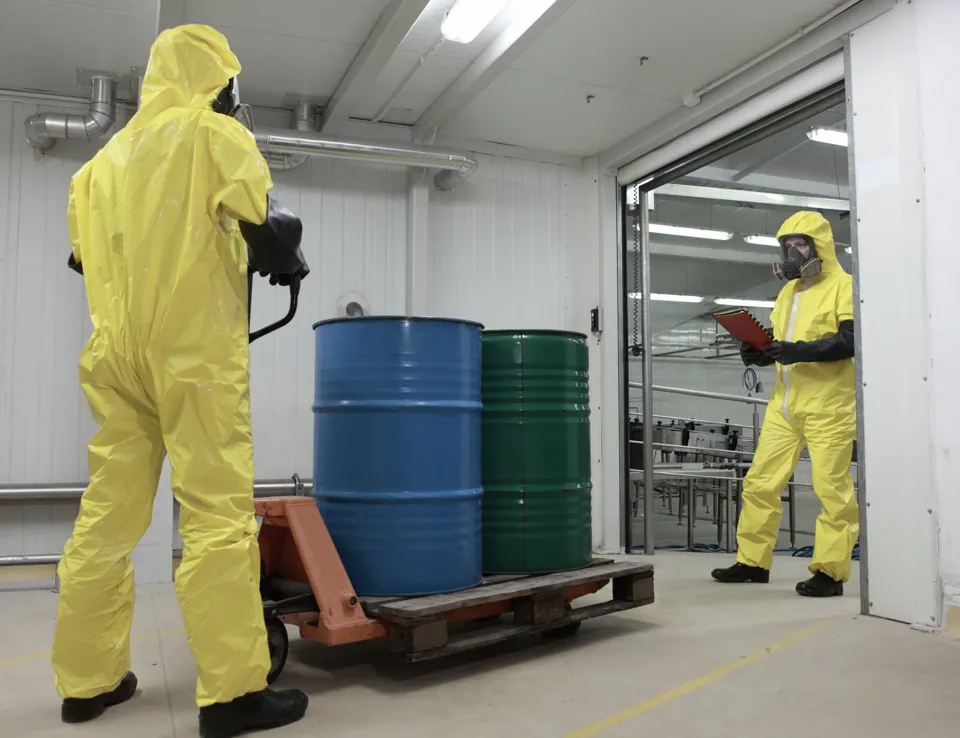Safety Data Sheet (SDS) management
Any organisation that handles, processes or manufactures chemicals will have access to chemical safety information held on Safety Data Sheets (SDS) ensuring that staff and stakeholders can understand the broader risks associated with using chemical products in the workplace.
SDS store vital information and communicate potential chemical hazards to the supply chain, end users and other stakeholders with the aim of minimising risks to people, assets, reputation and the environment. Failure to provide sufficient information on an SDS can cause delays in accessing markets, impact supply chains, increase costs, increase risk of harm to people, assets, reputation and the environment when emergency response relies on the data held. Companies may also lose business from poor quality SDS as customers opt for companies presenting complete and updated documentation first time, demonstrating attention to detail and reliability.
Regulations impacting your SDS
Required by chemical regulatory bodies and territorial borders worldwide, the information required to be included in an SDS is varied and detailed, and due to the frequency with which regulations are updated, constantly evolving. Ensuring you hold the most recent versions for all necessary chemicals can be a technical, time consuming and costly task.
SDS regulations originate from the Global Harmonised System (GHS) from which ‘building blocks’ for hazard classifications are established. GHS aims to improve the health and safety of workers, consumers and the environment by ensuring that information on the hazards of chemicals is consistent around the world. However, regional and country specific requirements for SDS differ with each country or region being allowed to choose which of these building blocks is implemented. Because of this, some hazards may not be applicable in one region but permitted in another, for example, the Skin Irritation Category 3 H316 classification is applicable in China, but not in the EU.
These regional variations and other additional intricacies mean your SDS and label will vary based on the region of supply while other factors can also influence SDS workloads. Currently, due to reports of inadequate SDS information by member states, The European Chemicals Agency (ECHA) has started an EU-wide enforcement project (REF-11) that will run throughout 2023 with the aim of checking the compliance of SDS with Annex ll of the EU REACH Regulation, outlining the content and format that all EU SDS must follow. The main objective of the project is to ensure that companies who manufacture or place products on the EU market are complying with the revised requirements and sees many organisations seeking validation that their SDS are sufficient.
Learn more about our regulatory compliance solutions >
SDS and emergency response
It is a requirement under the REACH Regulation that organisations provide an emergency telephone number in section 1.4 of their SDS to be used if chemical incidents such as spillages and fires should occur and is further complicated for organisations whose products are available in several EU Member States.
Ricardo operates a global 24/7 emergency response helpline service all year round through a network of international telephone numbers and local language speakers. Our helpline is also aligned with the Guidelines for Level 1 Chemical Emergency Response, and the principles of Responsible Care® and corporate social responsibility. Using our emergency number on your SDS provides a service to your customer that goes above and beyond compliance.
Learn more about emergency response >
SDS compliance and maintenance
Compliant SDS are not only safer but also more economically feasible as they reduce the need for corrective actions thereby increasing confidence in the SDS and the organisation by extension. Ricardo’s SDS authoring and translation services help customers minimise operational risk and maintains compliance by ensuring your SDS are accurate and cover all necessary product safety information.
The depth and breadth of experience across our SDS technical team means we can provide the necessary expertise and resources to meet your timescales and requirements while ensuring full compliance with the appropriate regional legislation. As we author high-quality SDS on behalf of clients worldwide and perform hundreds of translations per year in over 23 languages, our team has extensive experience in managing the crucial global differences and has established close links with regulatory bodies such as the European Chemicals Agency (ECHA), the Occupational Safety and Health Administration (OSHA) and the Health and Safety Executive (HSE) along with various Member State competent authorities.
Our services include:
- Authoring new SDS, Extended SDS (eSDS) and sourcing the required information.
- Translating SDS to more than 40 languages required by country-specific regulations.
- Updating existing SDS to comply with updated regulations, or new substance/mixture information.
- Regional SDS authoring, e.g., the German water hazard class, WGK.
- Supply and transport assistance including labelling inventory submissions and transport classifications.
- SDS compliance checks to provide reassurance to those writing their own SDS that your documentation is sufficient and meets industry standards, providing support and guidance where required.
- Production of CLP compliant labels for supply for any region in question, and in accordance with the regional regulatory requirements.
- Product of Transport labels which would be prepared by our team supported by a qualified DGSA, in a compliant and consistent format
Contact us today >
SDS management
Ricardo provide a comprehensive web-based solution to SDS and Chemical Risk Assessment management. Storing all safety information in one easy to use online system enables your whole organisation to access up to date SDS and risk assessments anytime, anywhere - supporting the continued safety of those handling and using hazardous substances.
Learn more about SDS Management >
Learn more about COSHH Chemical Risk Assessment >









